I used to think that Starbucks made good coffee. But ever since I started brewing pour overs and espressos at home, I’ve completely changed my opinion.
Don’t get me wrong, it’s still a decent place to get a drink. As long as it’s a sugary syrup-laced dessert beverage, with coffee added only as an afterthought.
So, when it comes to my preferred caffeine delivery mechanism, you can understand why I’m skeptical of chain stores.
As we were walking to the Ryse Hotel in Hongdae to check in for our vacation in Seoul, I noticed a Blue Bottle Coffee signboard sporting its iconic and minimalistic logo.
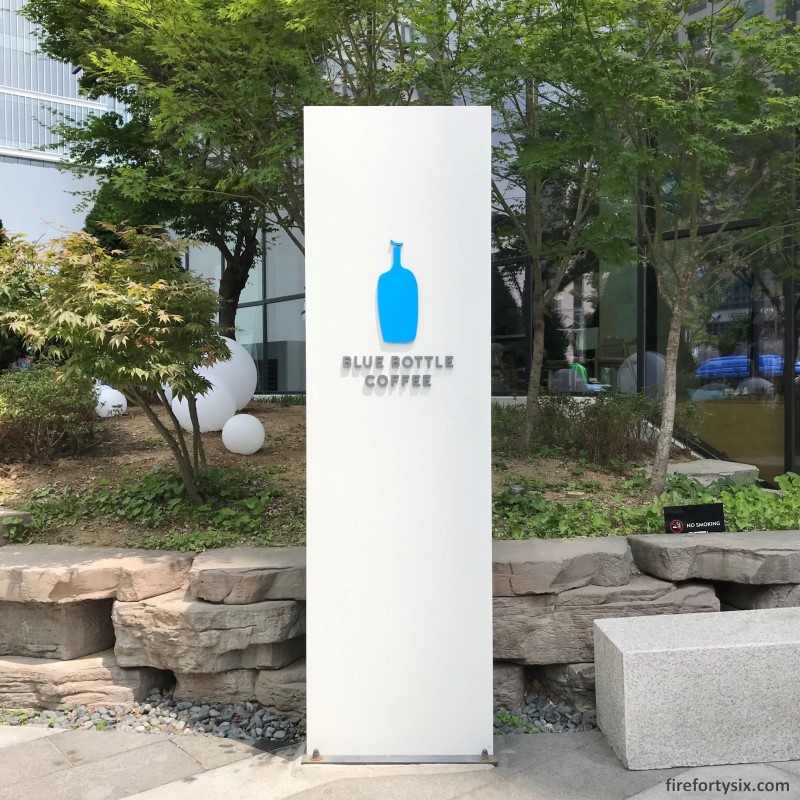
It had recently taken over the space in the hotel lobby, recently vacated by Tartine. Both being famous Californian brands that have expanded aggressively into South Korea.
Despite the convenient location, we didn’t end up drinking any coffee there over the five days that we stayed at Ryse. I did, however, went to check out its collection of freshly-roasted whole beans.
The one that caught my eye was their “Three Africas” blend, a medium roast that leaned towards the floral/fruity end of the flavour spectrum.
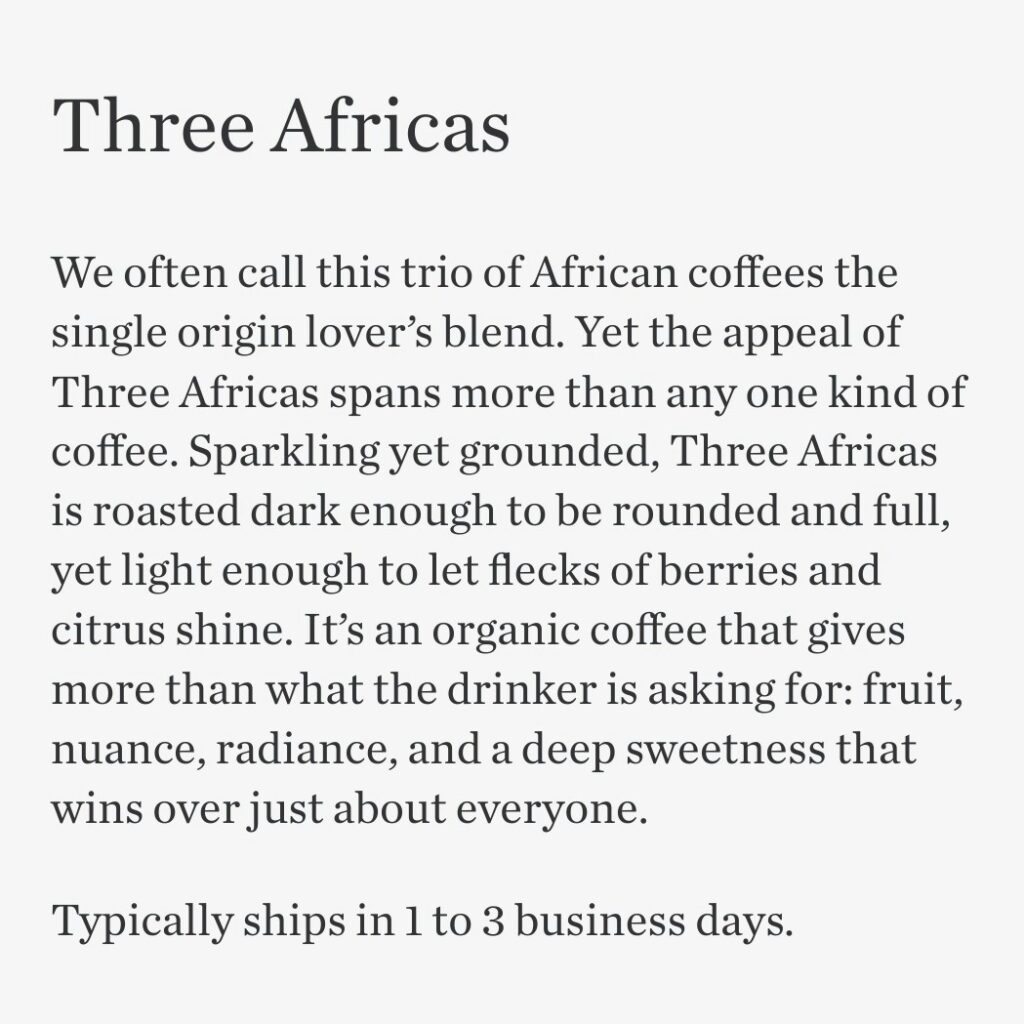
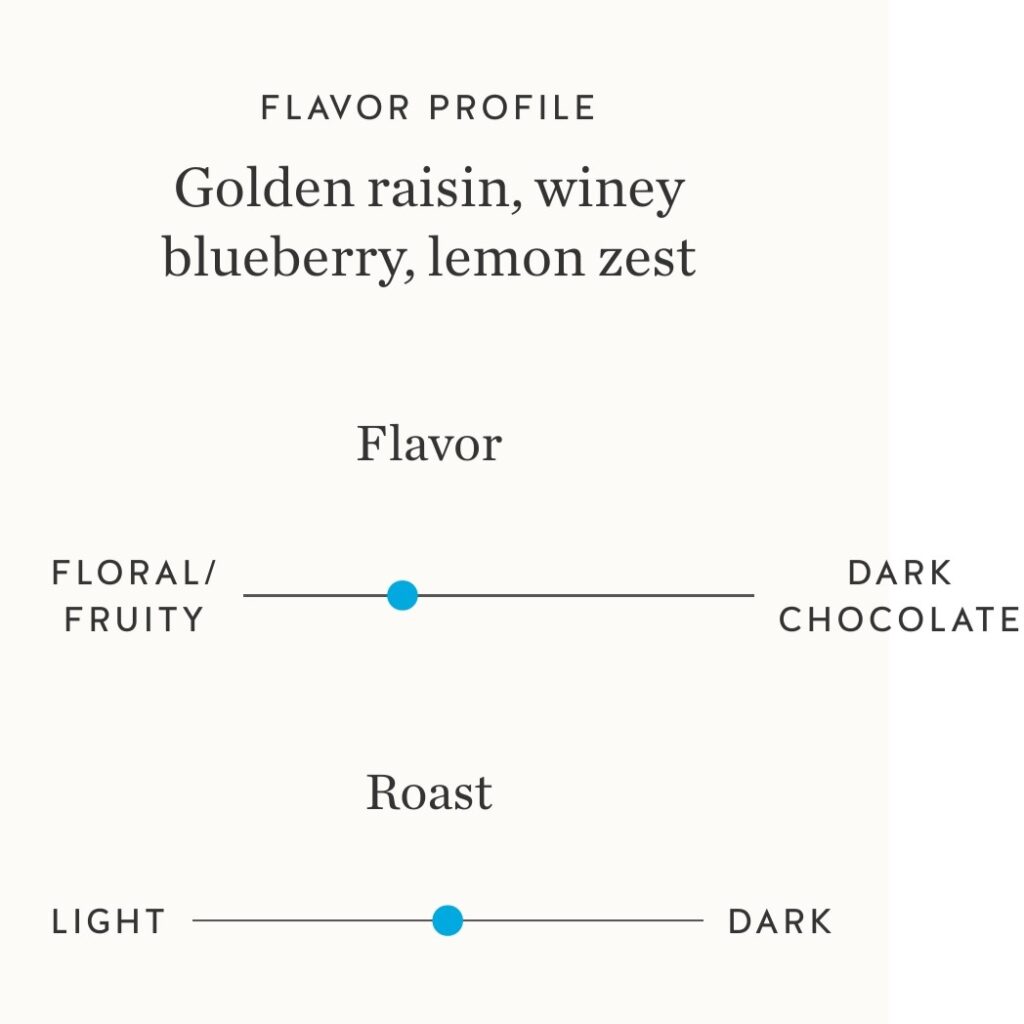
I had a nice conversation with the barista about the coffee, and she came across as both knowledgeable and enthusiastic.
Sensing that I was a fellow enthusiast, she proceeded to introduce the other beans on offer. Comparing their roast levels, taste profiles and recommended brewing methods.
We were just at the beginning of our vacation, so I didn’t buy anything that day. But I was impressed enough to make a mental note to give Blue Bottle a chance, and buy something home to brew.
A quick Google search showed that they had several stores all around Seoul. Ranging from a small kiosk at Myeongdong, to a large outlet at The Hyundai Seoul in Yeouido, to their flagship store at Samcheongdong.
En-route to Samcheongdong, The Wife was mysteriously drawn into a traditional wooden hanok that housed the Pleats Mama flagship store. Thankfully, she managed to escape its clutches, but not before sacrificing several hundred thousand won.

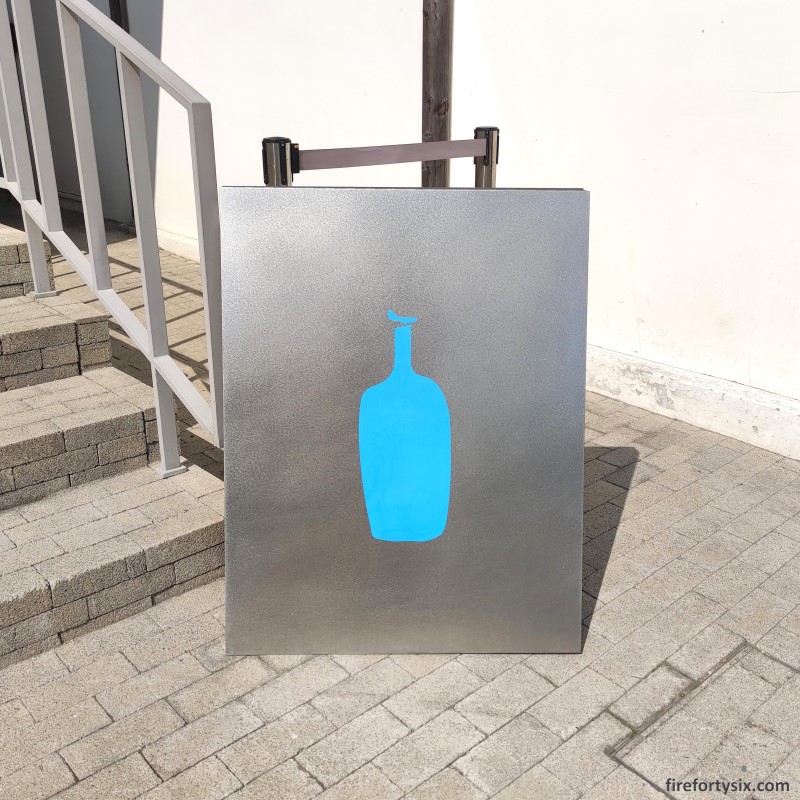
Blue Bottle Samcheongdong (Naver Maps, Google Maps) has an extremely minimalistic aesthetic.
From the outside, the only clues to its identity were a small logo on the plain white building façade, and an even smaller logo etched onto a stainless steel stand.
This continued into the interior, which featured sparse and unfinished brick walls and plain wooden shelves and cupboards. Even the display stands were formed using stacked concrete bricks and nothing else.
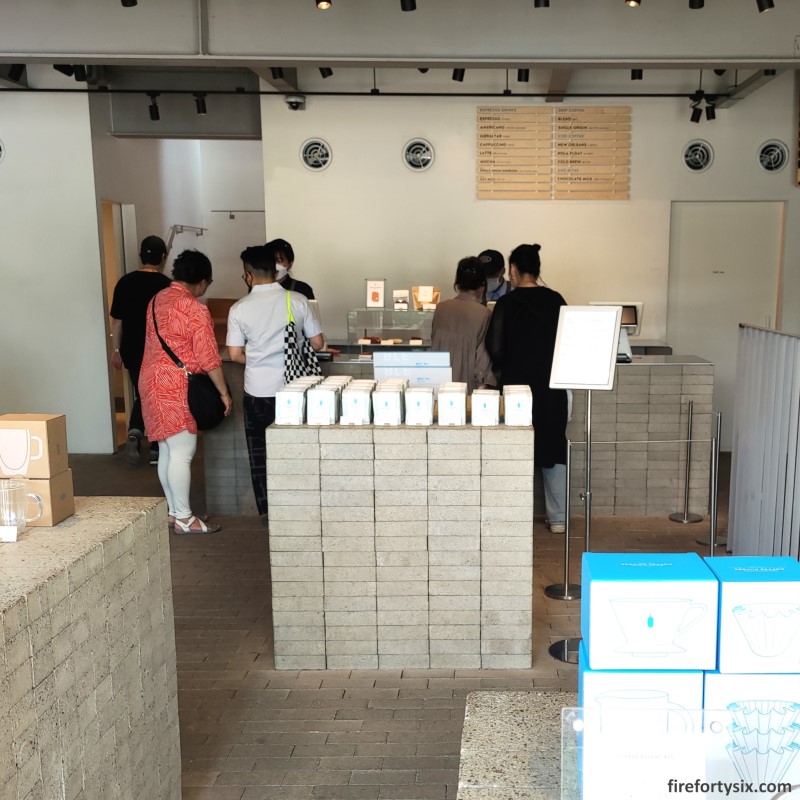
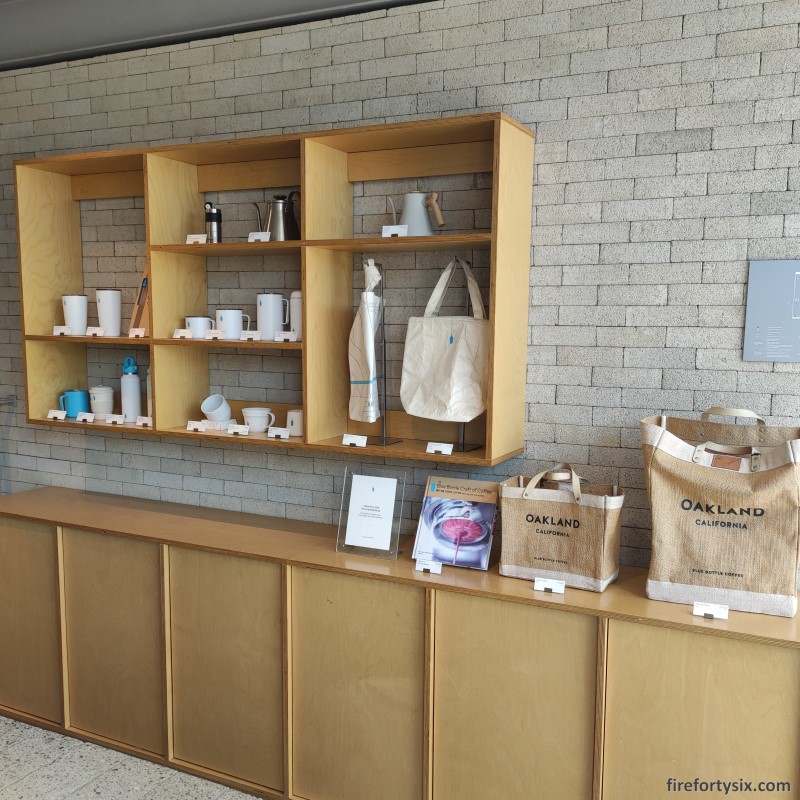

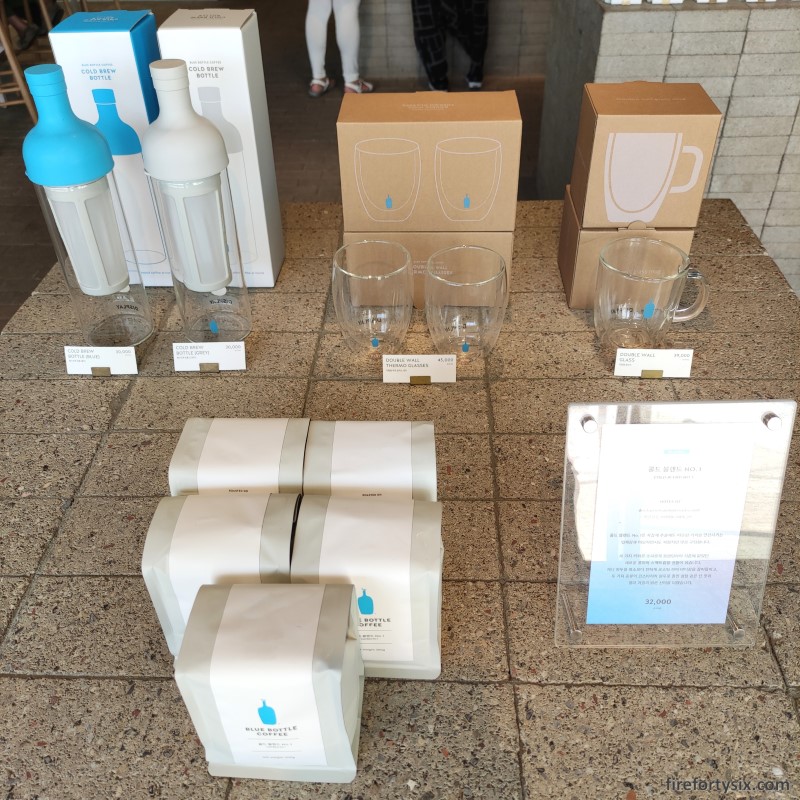
Seating on the ground floor was minimal but there were additional floors upstairs. Stairs are my nemesis and I didn’t venture upwards. In any case, I was here just for beans.
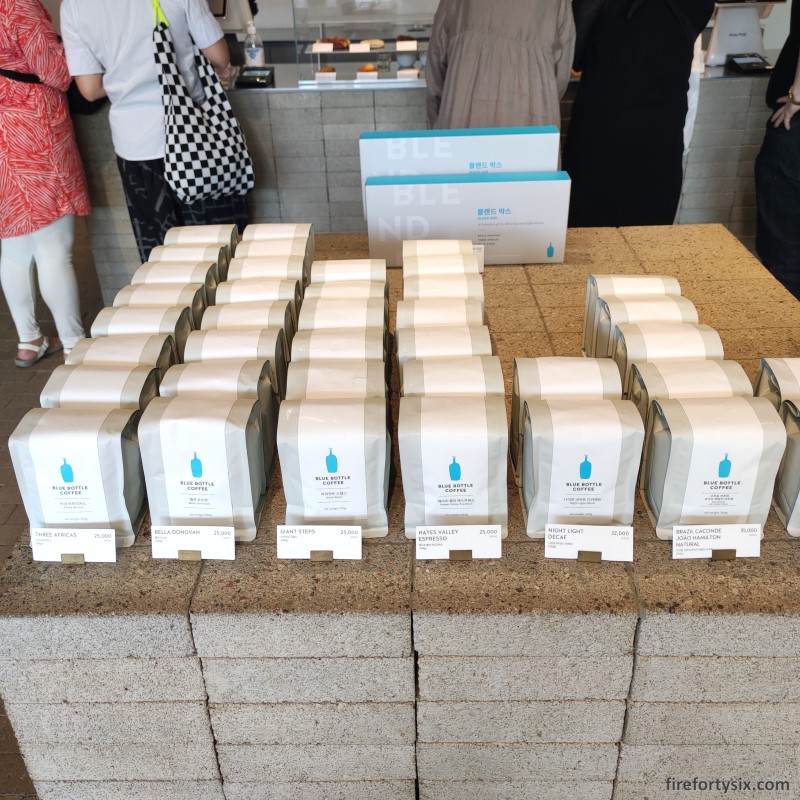
A wide selection was on display, together with their origins, tasting notes and prices. They were sold in unusually large 300gm bags, with blends going for ₩25,000 and single-origins for ₩35,000.
Prices were on par with most Singaporean roasters, maybe even lower given the on-going shrinkflation back home. While prices have stayed more-or-less the same (so far), there’s been a noticeable downgrade from 250gm to 200gm bags.
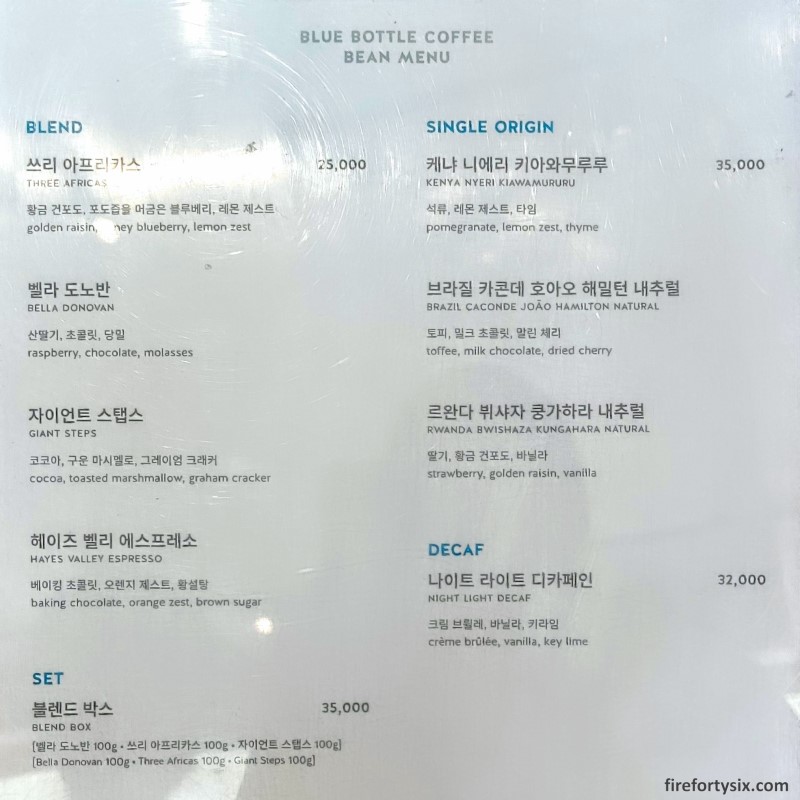
I spotted the Three Africas and immediately picked up a bag.
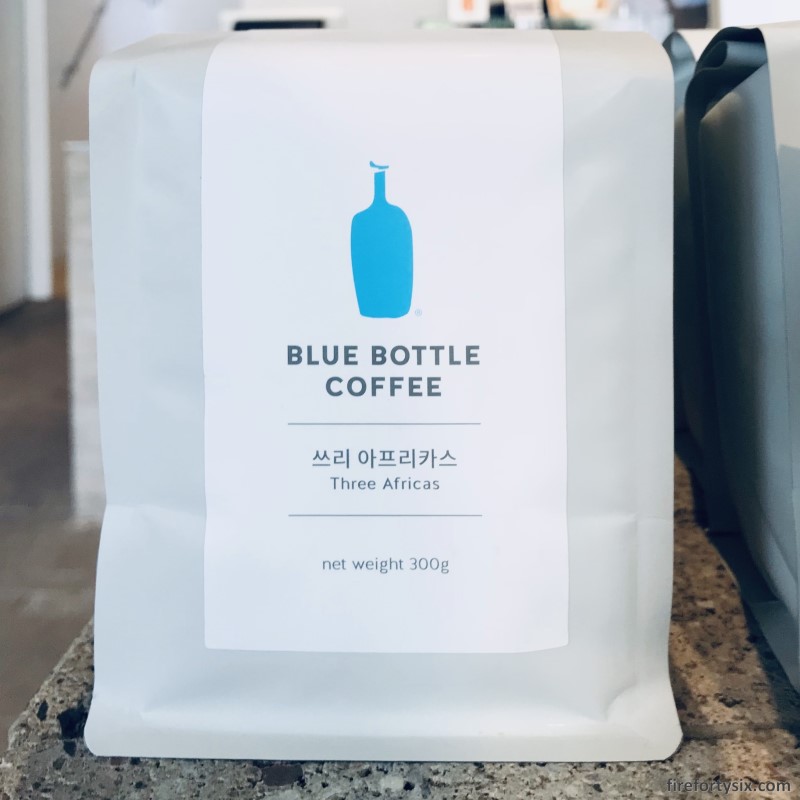
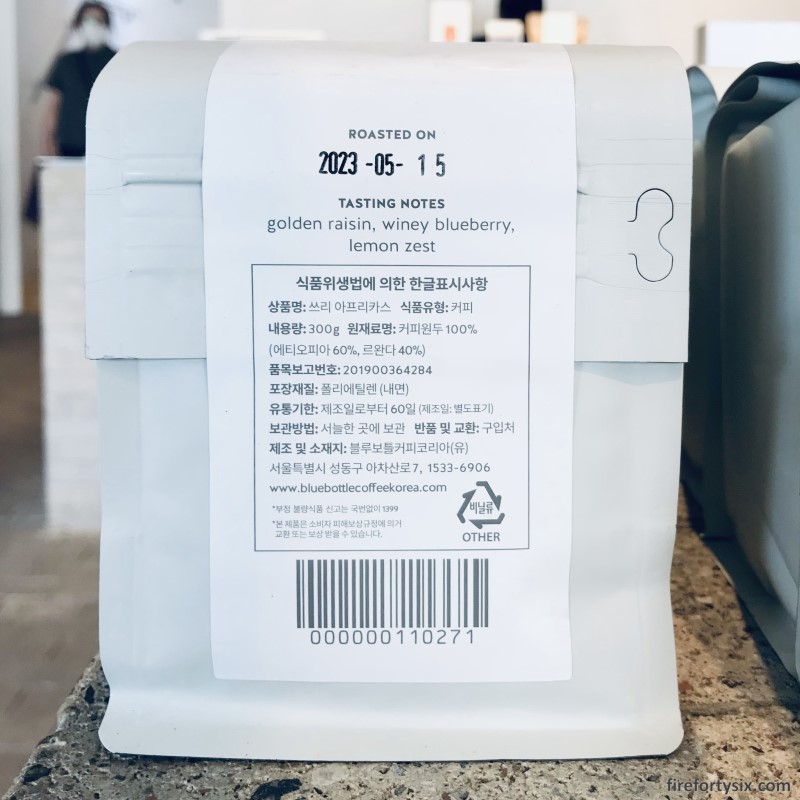
A barista was hovering near the display and we started chatting about, what else, coffee. He was as enthusiastic and knowledgeable as the barista at their Ryse Hotel branch.
When I shared that I was from Singapore, his eyes lit up.
“Oh! I’m visiting Singapore soon. Which coffee shops I should visit?” he enquired. I peppered him with a long list of local roasters, including Nylon, Tiong Hoe and 20grams.
He returned the favour by recommending txt coffee, his second-most favourite joint in Seoul. After Blue Bottle, of course. I immediately pinned it to my Naver Maps favourites list.
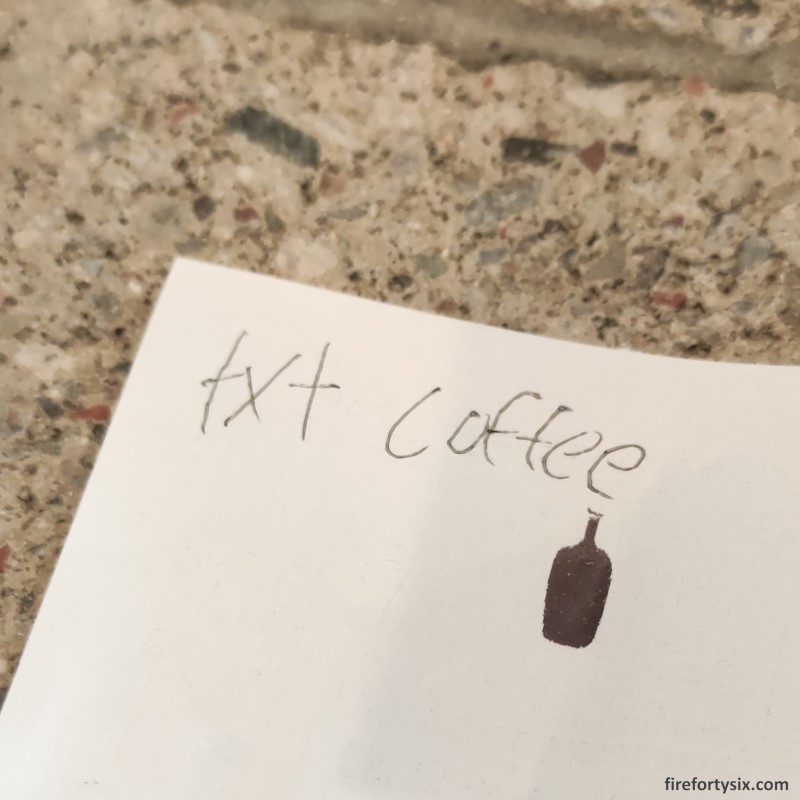
I was only planning to buy one bag of coffee, but ended up with a second — a naturally-processed single-origin from Rwanda, with tasting notes of strawberry, golden raisin and vanilla.
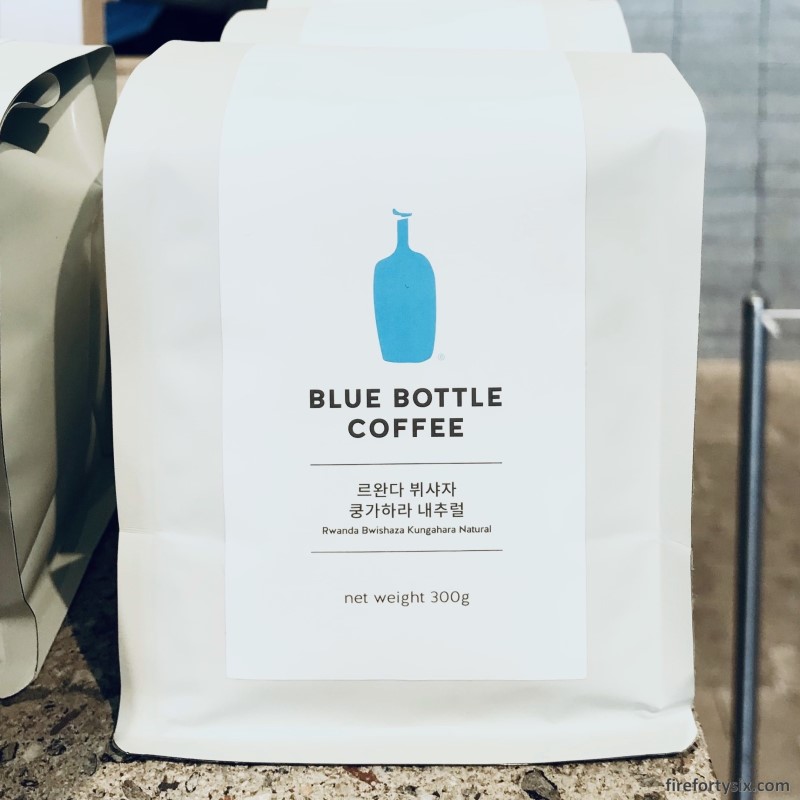
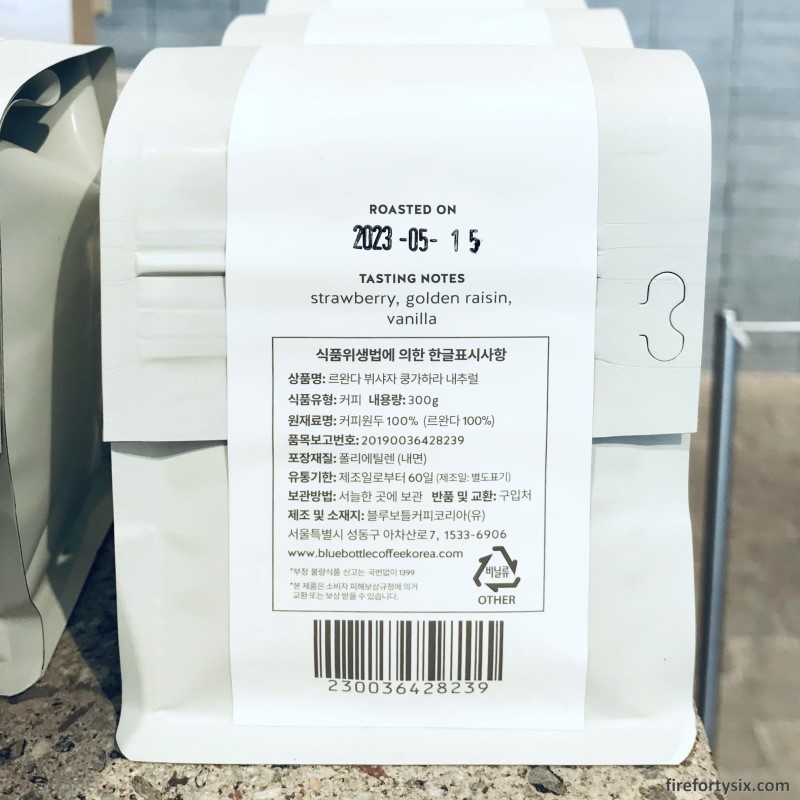
When we got home, and after letting the beans rest for 14 days after the roast date, I brewed the Three Africas with my trusty Hario V60.
The first try using the Tetsu 4-6 “Standard x Strong” recipe, with a grind size of 3-5-0 on my 1Zpresso JX-Pro hand grinder, coffee dose of 30gm to 500gm of 94°C water was decent.
It was balanced with a light acidity and good flavour, though slightly astringent. I switched over to the Onyx recipe, and dialed in my grind size until I ended up with a rounded cup that maintained its bright flavour.
After finishing the Three Africas, I brewed the Rwanda Bwishaza Kungahara Natural, also using the Onyx recipe. It was really juicy and fruity, with a noticeable hint of strawberry, which was even more prominent with bagel and Port Salut cheese.
I was impressed with both bags, and regretted not buying more home. Unfortunately, Blue Bottle doesn’t ship online orders to Singapore and has yet to open a physical store here.
The good news is that they have numerous outlets in Japan, including one in a 100 year-old building near Nanzenji temple in Kyoto. Which happens to be where we’re going for our next vacation.
Looks like I won’t have to wait too long for my next cup of Blue Bottle Coffee.
